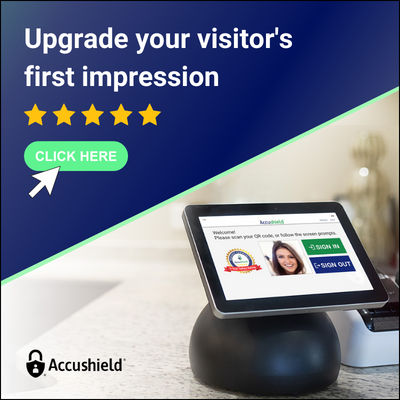A physician’s view of care coordination in assisted living
How could, or how should, clinicians coordinate health care with assisted living facilities?
This is the question I was asked recently, by someone working with a senior living developer. Like many, the developer is hoping to leverage technology for better care coordination, care collaboration, and overall better aging-in-place. It’s an appealing idea, and we certainly need better coordination of care and information for seniors. But it’s a tough problem to solve, especially when people are residing in facilities. For instance, as I wrote last fall, I once found myself sending faxes to the PCP, the neurologist, the home healthcare agency, the private in-home caregiving agency, and to the facility itself. Plus I was emailing the patient’s family on the side. And we didn’t even have the hospital transition team involved; although that case was related to an elder doing poorly after hospitalization, by then the patient was well outside the 30 day window of interest to hospitals. How can clinicians and assisted living facilities coordinate on healthcare for older adults? Sorry, I can’t answer that question yet. However, what I can do is specify some of the issues that I find myself trying to coordinate with assisted living facilities.
Coordinating medications with an assisted living facility
This probably constitutes the bulk of how most clinicians interface with assisted living facilties. Here are some of the communication issues that often come up in my practice:
- Requesting a copy of the current medication list, so I can see what may have been prescribed by other providers. Ideally a current medication list would be viewed by clinicians every time a complaint is assessed, or medications are prescribed. In reality however, clinicians often end up relying on outdated/incomplete lists.
- Discontinuing medications. When patients are having medications dispensed by assisted living, it’s generally not enough to just tell the patient during a visit that they should stop something. Clinicians also need to send an order to the facility. It would, of course, be nice if there were an easy way to double check that a medication had been discontinued as requested (currently requires more phone calls and faxes).
- Ordering PRN (“as needed”) medications. Ordering is actually the easy part. The hard part is figuring out how patients will voice their need, and making sure that the facility is able to respond. Most of the time, patients and families tell me that they have difficulty getting PRN meds dispensed by facility staff. My guess is that this is because the facility staff are relatively busy, and perhaps haven’t had much training in managing PRN meds.
- Requesting a log of how much PRN medication was given. This information is essential if a clinician is to properly adjust a medication regimen and manage symptoms appropriately.
- However, I’ve found is often absurdly difficult to get this data, and facility staff are usually puzzled when I ask for it. In fact, the staff at one facility recently told me that their policies forbade them from giving me a copy of the MAR (“medication administration record”), which is the part of the medication chart where staff document when they actually give medications. (Weirdly, the med tech offered to hand write the information for me; I pointed out that this was error-prone and insisted on talking to the nursing director about the policy.)
- Clarification/confirmation of current orders. Facilities often contact me if they have questions about a new medication order. Many facilities also fax a medication list regularly and ask the primary care doctor to confirm that the med list is correct. (Which can be challenging if the patient has been seeing lots of other doctors.)
Other issues I coordinate with assisted living facilities
Other than medications, I also sometimes try to coordinate regarding:
- Monitoring of blood pressure. Most facilities won’t check blood pressure every day indefinitely, but they can often manage a few checks over a week or two. I’ve found I often have to remind them to send me the data however. (Same goes for the home health nurses; they are easy to reach by phone and delightful to talk to, however they don’t always send me the information I ask for. Presumably it’s not well within their workflow to send specific info to doctors, whereas sending the [nearly useless] mandated reports IS in the workflow.)
- Obtaining information regarding the person’s cognitive and physical status. I often want to know how a person has been doing cognitively and physically. Are their mental abilities same as usual, or worse? What kinds of activities of daily living do they need help with, and any recent changes? How far are they walking, and with what kind of assistive device? Facility staff are excellent people to query on this topic, if you can get the right person on the phone.
- Responding to facility concerns regarding health or behavior. In my experience, facilities usually send a fax when there is an event or change that they are concerned about. (Occasionally they call, but not usually.) I then try to call or fax back, in order to get more information so I can address the concern. The back-and-forth can be time-consuming.
- Behavioral interventions. This one is very tricky, especially when it comes to patients who are cognitively impaired. Many older patients can benefit from changing their own actions (i.e. timed toileting for incontinence, or a daily short walk to maintain mobility), but they need assistance or reminders to do so. Some facilities are able to provide this kind of behavioral support; others aren’t.
Summing it up In my own work as primary care doctor and geriatrician consultant for the elderly, I’ve found that most of my communication with assisted living facilities centers around medication management issues. I also often communicate regarding short-term monitoring and to try to get information about the patient’s cognitive and physical function. Obviously, there are plenty of opportunities for technology to facilitate communication and collaboration regarding the above issues. But it’s also quite challenging to develop something that all the involved parties can and will use. Clinicians and others, if you’ve come across technological solutions that work well for the needs listed above, please let me know or post in the comments. This article was first published at GeriTech








I couldn’t agree more. To maximize the care that a patient will receive without sacrificing their comfortability, one has to exert great efforts on management issues and, at the same time, strengthen the patient-to -doctor bond. Long-term care derives its industry from the term “long-term” itself. If the comfort that the assistance and medication a patient will receive is short-lived, it has very little to no value at all. Very well written. Hits the spot on coordination issue
From LinkedIn Groups
This is probably why so few physicians want to treat patients in assisted living facilities.
By Lorie Eber
From LinkedIn Groups
This is a great article reminding us all of how to keep the doctor in the loop in Assisted Living. But the doctor’s name is not easily found in your blog. The author is Leslie Kernisan, MD MPH and here’s her original blog post: http://www.geritech.org/p/geritechs-primary-author-is-me-leslie.html
By LaVrene Norton
We actually built a platform that was specifically designed for this and handles every one of these items. We even added EMR patient portal login so caregivers can see what the doctor has prescribed, without sending a fax. You can create a profile for free and start coordinating care at http://www.caretree.me.